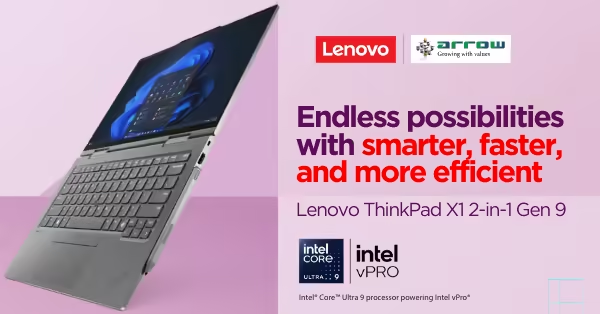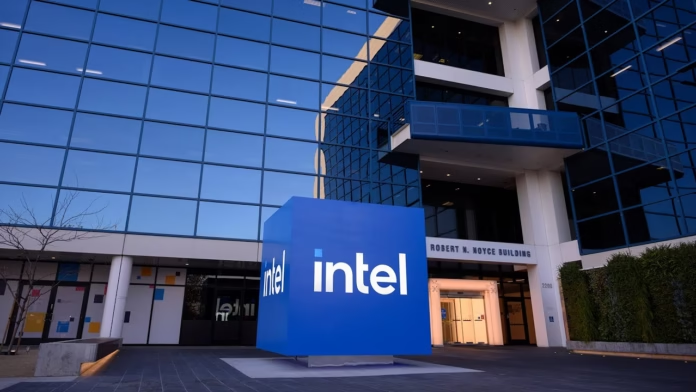There was a time when Intel wasn’t just a name it was the name in computing. Every serious PC, every reliable server, every enterprise deployment seemed to have Intel’s silicon inside. It was the gold standard.
So, how did one of the most powerful companies in tech get overtaken by rivals it once dwarfed? And more importantly—what will it take for Intel to claw its way back?
Let’s rewind, and then fast-forward.
The Rise of Intel: From Garage Roots to Global Muscle
Intel didn’t explode out of the gate. Founded in 1968 by Gordon Moore and Robert Noyce, the company spent its early years developing memory chips. The breakthrough came in 1971 with the first commercial CPU, the 4004—a modest beginning for a company that would soon reshape modern computing.
The 1980s and ‘90s were Intel’s golden era. IBM selected the Intel 8088 for its first personal computers. Then came the iconic 286, 386, 486 chips, and the unforgettable launch of Pentium processors in 1993. Intel was now a household name. In fact, the “Intel Inside” campaign didn’t just push branding—it educated an entire generation about CPUs.
This wasn’t just consumer success. Intel rolled out Xeon processors for servers in 1998, quickly dominating enterprise environments. Big corporations, cloud providers, and modern solution partners like Arrow PC Network trusted Intel to deliver performance and reliability at scale.
Where It All Went Sideways
Intel’s decline wasn’t a single misstep—it was death by a thousand decisions.
One of the biggest? Turning down Apple in 2007. When Apple asked Intel to supply chips for the first iPhone, Intel passed. They didn’t see the mobile wave coming. That opportunity landed in ARM’s lap. Today, ARM powers most smartphones on the planet.
Meanwhile, AMD staged a remarkable comeback. The 2017 launch of Ryzen CPUs shook up the market, offering comparable—if not superior—performance at lower prices. Intel, long known for top-tier CPUs, suddenly had real competition.
And while Intel was stuck in delays trying to shrink its manufacturing nodes, competitors like TSMC and Samsung charged ahead with smaller, more efficient chips. Companies offering end-to-end IT services, such as Arrow PC Network, began factoring TSMC-based solutions into their deployments. Intel was no longer the default.
Nvidia, GPUs, and the Missed AI Opportunity
Another blind spot? GPUs. While Nvidia was building out a full ecosystem for AI computing, Intel barely had its foot in the door. Gamers, researchers, and AI developers all leaned into GPU-driven workflows. Nvidia’s dominance in AI wasn’t by accident—it was the result of years of focus and execution.
Intel tried to break into this space with efforts like the i740 (which flopped) and later with acquisitions like Habana Labs. But even as late as 2024, their Gaudi 3 chips failed to match Nvidia’s performance. Intel even admitted that AI revenue targets would be missed.
In today’s AI-accelerated economy—where businesses demand high-performance computing and scalable infrastructure—Intel’s inability to deliver on GPU competitiveness has been a major setback. It’s why partners offering advanced IT Services by Arrow PC Network often lean toward alternative solutions when raw GPU power is critical.
Strategic Misfires and Expensive Mistakes
Intel hasn’t just missed trends—it’s misjudged some entirely.
Itanium, launched with Hewlett-Packard in the early 2000s, was meant to redefine the server landscape. But it lacked compatibility with x86 software and quickly became obsolete.
The $7.7 billion McAfee acquisition in 2010 was poorly integrated and eventually spun off.
Intel also spent $15 billion acquiring Mobileye but failed to fuse the innovation into its main architecture.
Perhaps the most painful? In 2017, Intel reportedly passed on investing in OpenAI—a move that would’ve positioned them directly in the AI hardware space.
And then there’s quality control. Intel’s 13th and 14th-generation Raptor Lake chips were plagued with stability issues in 2024. Multiple lawsuits followed, and customer trust took a hit.
What Happens Next?
Despite the setbacks, Intel isn’t out of the game.
The company is betting big on its next-generation process node: Intel 18A. It’s a technical leap—smaller transistors, more efficient design, and a new architecture called RibbonFET. If executed right, it could put Intel back on the map for advanced chip fabrication.
But execution is everything. The road ahead isn’t just about technology—it’s about trust. The business community, and leading partners like Arrow PC Network, need to see a return to reliability and performance before putting Intel back at the center of their digital strategies.
Reclaiming Leadership in CPUs and GPUs
Intel still has a chance to reassert dominance in the CPU market—especially in data centers and enterprise applications. That’s an area where Intel historically thrived, and where decision-makers still look for stability.
As for GPUs, the path is tougher. Nvidia’s lead in AI is formidable. Hyperscalers like Amazon, Google, and Microsoft have built their own custom accelerators. Intel needs to offer something not just competitive—but different.
If Intel can crack the GPU challenge, it has a shot at becoming more than just a CPU company again.
Efficiency, Culture, and a New CEO
Intel’s also dealing with internal struggles workforce morale, restructuring, and leadership instability. With Pat Gelsinger stepping down, the next CEO must do more than shake up the org chart. They’ll need to reshape company culture, rebuild investor confidence, and present a compelling new vision.
As Forrester analyst Alvin Nguyen puts it, this isn’t just a pivot—it’s a transformation. And that only works if it’s backed by execution, not just press releases.
Can Intel Rise Again?
Absolutely—but not by repeating old playbooks.
The company must be smarter with partnerships, bolder with design, and ruthless with execution. The semiconductor space moves fast, and there are no guarantees. But Intel still has the resources, the talent, and the legacy to mount a comeback.
With strategic alignment, modern tech partners like Arrow PC Network can help Intel return to relevance—by building solutions that push its future-forward chips into real-world use cases.
The market may have moved on but the door isn’t closed. Not yet.




![News] Intel's Comeback? NVIDIA and Broadcom Reportedly Eye 18A, with a Boosted Version in the Works | TrendForce News](https://i0.wp.com/img.trendforce.com/blog/wp-content/uploads/2025/03/28094604/Intel-18A-624x428.jpg?resize=624%2C428&ssl=1)

